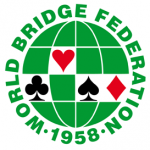
5th FunBridge World Youth Open Championships
Lyon, France • 15 – 24 August 2017
| Results | Live Streaming | WBFY Facebook | Bulletins | News |
Lyon – Timelapse from GILAL on Vimeo.
Time-lapse bridge is a technique whereby the frequency at which a match is captured (the boards rate) is much lower than that used to view the whole match. These are the boards included in the time-lapse bridge of the match for the BB Semifinals (R5) between USA2 vs Bulgaria:| Bulgaria | USA 2 |
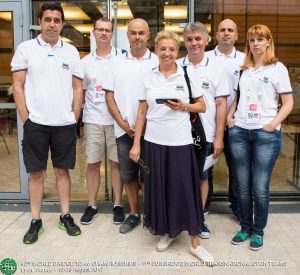 |
 |
 The set ended 30 Bulgaria – 33 USA2 IMP.
Board 11
The set ended 30 Bulgaria – 33 USA2 IMP.
Board 11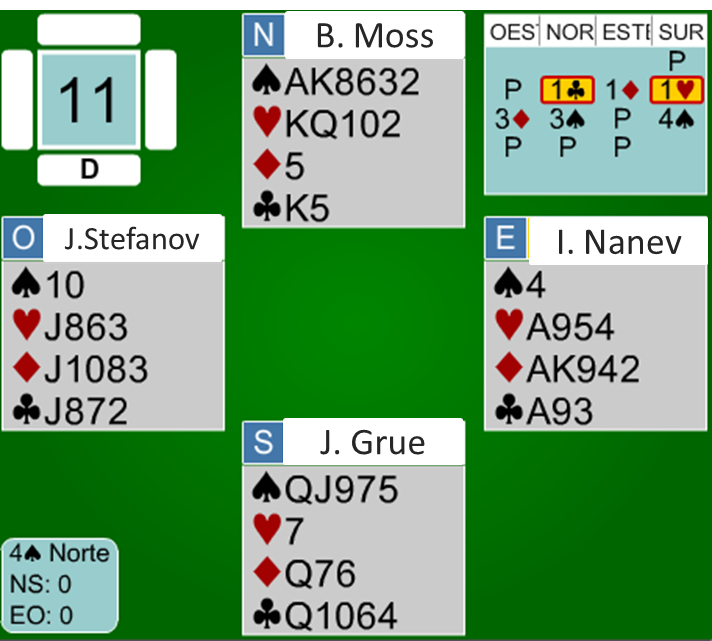 These were ahollan’s explanations in the VG BBO Table.
ahollan2→: 1
These were ahollan’s explanations in the VG BBO Table.
ahollan2→: 1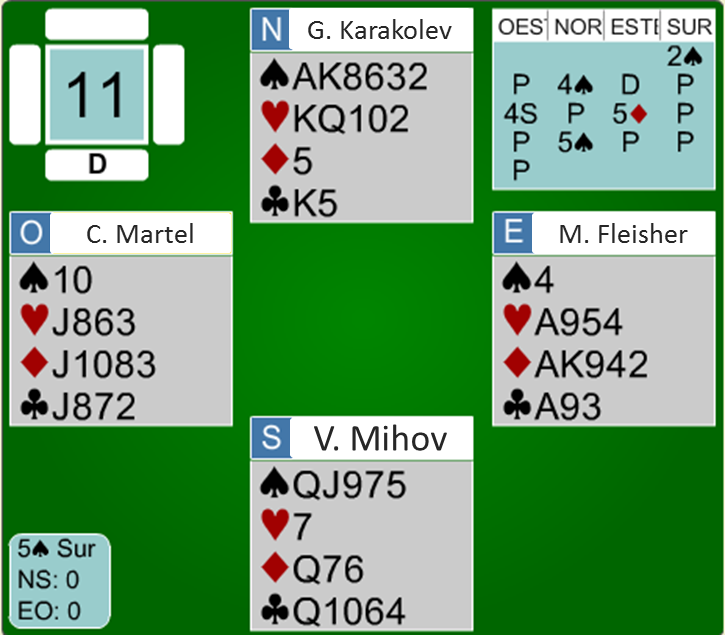 South chose to open with a spade weak bid, and North jumped to game. Fleisher decided to act, and doubled. Martel asked him to pick the suit, and Fleisher chose diamonds.
Karakolev misjudged and said 5
South chose to open with a spade weak bid, and North jumped to game. Fleisher decided to act, and doubled. Martel asked him to pick the suit, and Fleisher chose diamonds.
Karakolev misjudged and said 5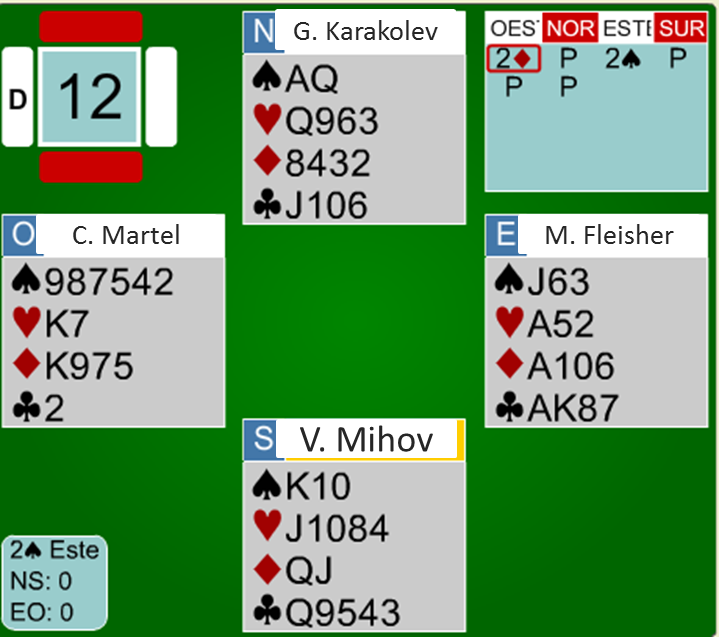 West opened showing a weak major, and his partner chose to pass. Declarer made 11 tricks. In the other room, with the same opening bid, East invited to game and West accepted, 6 IMPs to Bulgaria.
Board 14
West opened showing a weak major, and his partner chose to pass. Declarer made 11 tricks. In the other room, with the same opening bid, East invited to game and West accepted, 6 IMPs to Bulgaria.
Board 14 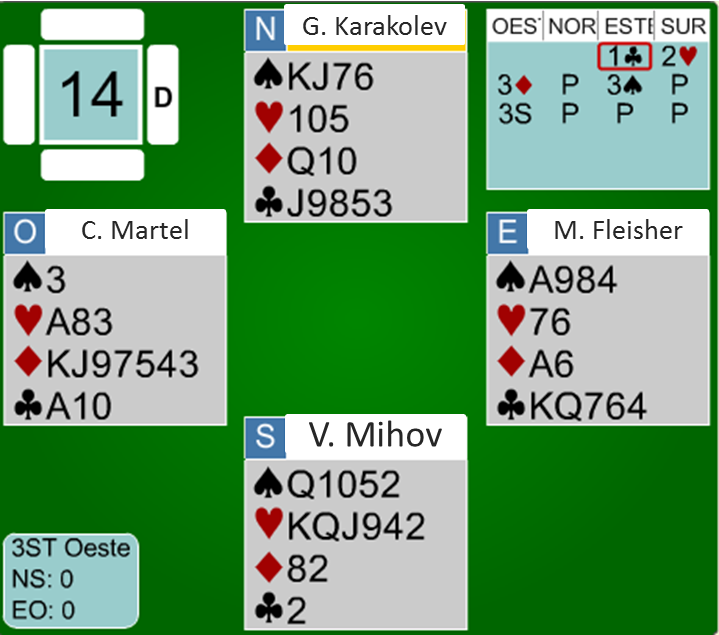 Fleisher & Martel decided to play 3NT, made 10 tricks. At the other table Bulgaria found the diamond slam:
Fleisher & Martel decided to play 3NT, made 10 tricks. At the other table Bulgaria found the diamond slam: 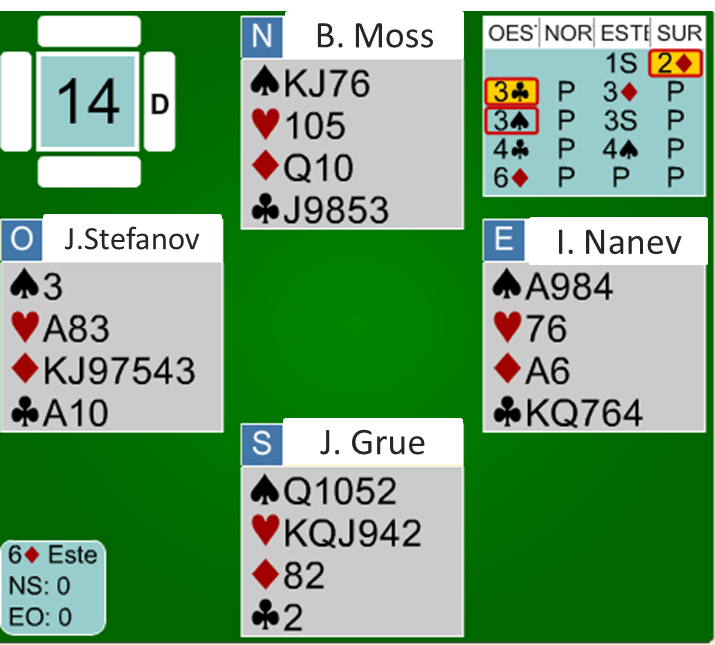 These were ahollan’s explanations in the VG BBO Table: Grue opened 1NT (14-16), 2
These were ahollan’s explanations in the VG BBO Table: Grue opened 1NT (14-16), 2- fuquay→Here 6
 makes with 2-2
makes with 2-2  , or 3-1
, or 3-1  and 3- 3
and 3- 3 . Or stiff
. Or stiff  Q of course.
Q of course. - patricck→: Yes, 6
 is quite good contract
is quite good contract - bobholl→: a lot better than 3NT
- patricck→: 2-2
 or 3-1 with singleton Queen happens 52.5% of the time
or 3-1 with singleton Queen happens 52.5% of the time - vugraphc1→: In 52.5% of the time, (it works every time :))
- patricck→Mesa : Some of the time when the diamonds are not singleton queen you get to make with a 3-3 club break anyway
- ady→Mesa : I would a expect a few imps for USA here
- patricck→Mesa : I’m going to say 6
 will make about 65% of the time
will make about 65% of the time - bobholl→Mesa : and on a
 lead it is even made with
lead it is even made with  42
42
- ahollan2→: after short
 lead not surprised he played for
lead not surprised he played for  3-1
3-1 - serhat→: will he lead singleton with Qxx?
- stc→: dec read correctly the lead as a single and decided to take the finesse
- ahollan2→: but would he lead stiff with
 Qxx
Qxx - ahollan2→: garozzo said if you don’t lead singleton you don’t have one [or it is singleton trump]
- stc→: a very expensive decision, minus 10 instead of plus ten




























